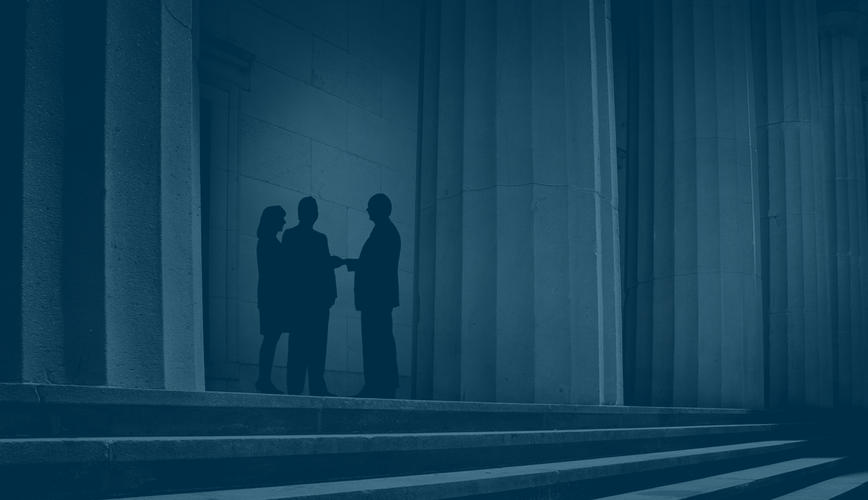Newsletter IP, Media & Technology January 2015
ECJ: “Framing” alone does not constitute the public communication of a work
ECJ, decision of 21 October 2014 (File No. C-348/13)
Head note:
Using the framing technique to embed a protected work, which is available to the public on one website, into another website with a link – which is the issue in the initial proceedings – does not per se constitute public communication within the meaning of Art. 3 (1) of Directive 2001/29/EC of the European Parliament and the Council of 22 May 2001 on the harmonization of certain aspects of copyright and related rights in the information society, provided the particular work is not disclosed to a new public or according to a special technical process that differs from that of the original disclosure.
Comment
Under a referral from the BGH, the ECJ has had to address the question of whether the unapproved communication of a film on the Internet through so-called “framing” violates exploitation rights under copyright law. With “framing”, content that is available for retrieval from another website is made available in a “frame” appearing on the retrieved website via a link. When one clicks on the link, the content is played. The visitor to the website has the impression that the content is being retrieved on the website visited. In the present case, a company had a short clip made on the topic of water pollution. It was uploaded to “YouTube”. The company asserts that this was done without its consent. Two independent commercial agents for a competitor then made the video available on their websites by way of “framing”. Thereafter, they were warned and they issued a declaration of discontinuance. There is still litigation seeking damages and reimbursement of the costs of legal prosecution of the case.
“Framing” does not constitute making a work available to the public under Sec. 19a UrhG
In the opinion of the BGH, the communication of the film, which is a “work” under copyright law, on the websites of the commercial agents through “framing” did not constitute making the film available to the public within the meaning of Sec. 19a of the German Copyright Act (UrhG). Earlier legal precedent primarily dealt with the “normal” creation of a hyperlink. Creating such a link, by its very nature, constitutes “making something available”. Nevertheless, there is no copyright-relevant act of use. Moreover, the content has already been made available on the website to which the reference is made. The creator of the link has no control over the provision of the content. In the opinion of the BGH in its decision for referral and in agreement with the prevailing opinion in the literature, this also applies to “framing”, which has not yet been addressed by the highest court. Here, too, the creator of the link does not control the provision of the work. The user’s mere impression that the work is being displayed on the linking website is irrelevant to the question of whether a work is being made available to the public within the meaning of Sec. 19a UrhG. Appellate courts, such as the Higher Regional Court (OLG) of Düsseldorf saw this differently and found a violation of Sec. 19a UrhG. The BGH and ECJ assess the matter differently (with differences in the details) with respect to the creation of certain “deep links” by which the creator of the link circumvents the rights holder’s technical, restrictive protective measures.
“Framing” as interference with other exploitation rights?
However, the right to make a work available to the public under Sec. 19a UrhG is only a special expression of the right to publicly communicate a work under Sec. 15 (2) UrhG. In addition to the aforementioned exploitation rights under Secs. 15 (2) and 19 et seq. [UrhG], there are also implied but unnamed rights of public communication (innominate rights). The statute is flexible here so as to include new types of use and counteract the possibility that the legislature may “lag behind” technical and economic developments. This includes, e. g., polling transmission rights and online distribution rights.
In the opinion of the BGH, the communication of a film through “framing” could infringe such innominate rights of use. The right of public communication is a so-called harmonized right, which is regulated under EU law by Article 3 (1) of the Information Society Directive (Directive 2001/29). To be sure, this provision does not apply directly. However, the level of protection established therein may not be increased or decreased by national legislators. Under a Directive-conforming interpretation of Sec. 15 (2) UrhG, in the opinion of the BGH, the fact that the creator of the link makes the work his own by embedding it in his own website and thus dispenses with the consent of the rights holder to his own provision of the work, speaks in favour of a finding that innominate exploitation rights have been infringed. In this case, the creator of the link has a central role in the communication of the work comparable to that of the creator of a “deep link”.
Communication through “framing”, standing alone, does not constitute public communication
In February 2014, the ECJ dealt with the question of whether the creation of a normal hyperlink to another website constitutes a public communication within the meaning of Article 3 (1) of the Information Society Directive in the case of Svensson et al. v. Retriever Sverige (judgment of 13 February 2014 – C-466/12). The Court found that there was no public communication to the extent that the content on the linked website had been made freely available. Nevertheless, the BGH sustained the question for referral based on the alleged peculiarities of the “framing”.
The ECJ has now confirmed in decision form that “framing”, per se, does not constitute public communication. A formal judgment is not necessary, since the answer to the referral question is clear under existing legal precedent – particularly the Svensson et al. v. Retriever Sverige judgment. Accordingly, a linking – even to a freely available work – is public communication. In this, the ECJ departs from the existing legal precedent of the BGH, which generally found no act of use that was relevant under copyright law. However, there is no public. This presupposes that the work will not be communicated through the use of a different technical process or to a new public that differs from the original public. The adoption of another technical process to effectuate the linking can be excluded since transmission on the Internet is always by cable with the aid of an IP protocol. The question of whether a new public is being reached remains.
This is not the case with respect to “framing” if the work on the linked website is freely available. If the rights holder makes his work freely available to all Internet users, the visitors to the linked website are among those originally intended to view the work and not a new public. In particular, it is not a matter of whether the creator of the link makes the work his own and gives the impression that the work is actually part of his own website. Whether the “framing” is likely to avoid the necessity of obtaining a copy of the work is also not a deciding factor.
After the Svensson et al. v. Retriever Sverige judgment, the ECJ’s recent decision was actually not necessary. The basic considerations regarding “hyperlinks” in the earlier judgment were readily transferrable to “framing”. However, the equal treatment of “hyperlinks” and “framing” under Article 3 (1) of the Information Society Directive has now been confirmed under EU law. Nevertheless, the February 2014 judgment and the October 2014 decision are potentially explosive for other reasons and raise some questions. In these rulings, the ECJ – with its basic assumption that creating a link to a freely available work constitutes a relevant act of use under copyright law – fundamentally diverges from the current German legal precedent in the “Paperboy” case (BGH GRUR 2003, 958, 962 – Paperboy). Since the question of a “new public” depends on whether the rights holder considered the additional public when he published his work, there is a question as to how to treat cases in which the work has become public without the permission of the rights holder. Under the referral case, this is now relevant to making a decision. How the author’s consent to the first public communication should be interpreted is also a question. For example, a company that provides content on its own Internet website as part of its own offering is precisely interested in having the user obtain this information from its website and not from elsewhere.
Conclusion
The presumption that, in the absence of a technical restriction on the access to content, the rights holder consents to every conceivable type of use on the Internet, is a fiction that is hardly tenable under the facts. For the Internet, this means that the characteristic of the “new public” would never be recognized in the absence of protective measures. In this case, the rights holder would be completely unprotected. The ECJ has after all not gone this far. The Court has expressly found that there may be an act of exploitation subject to licensing within the meaning of public communication in other cases outside of the two “standard examples”, but indeed not “solely” due to embedding. Therefore, there is still room for consideration of all of the circumstances in which the question of whether the particular act of use serves commercial purposes can play a role.



![[Translate to English:] [Translate to English:]](/fileadmin/_processed_/b/1/csm_Personen_vor_Bildschirmen_Militaer_Verteidigungssystem_iStock_erweitert_7515f53104.jpg)




![[Translate to English:] [Translate to English:]](/fileadmin/_processed_/d/3/csm_Daten_personenbezogen_Gesichtserkennung_iStock_erweitert_9cd904bfb8.jpg)

